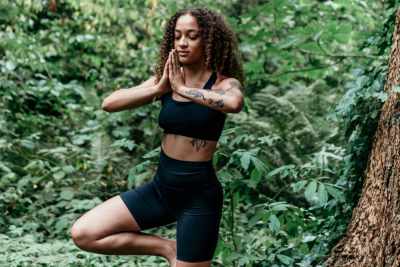As there are so many different yoga centres and schools, it’s hard to know which one is right for you. When choosing a yoga centre, what is most important is the learning experience offered and how this advances and contributes to a deeper understanding of your practice.
Style
The type of yoga offered will often be a large factor when deciding on a centre. It may be helpful to do a bit of research to find out which style you think would best suit you and help you get exactly what you want out of the practice. Some yoga centres specialise in a range of styles, while others have a specific focus. Some yoga centres offer synergy styles that may integrate styles such as ashtanga, Iyengar and more. This is great for newcomers who are unsure of what style to choose or for advanced students looking to experience different styles.
Props
Depending on the style of yoga you choose there may be props involved. This is most commonly associated with Iyengar yoga, however other yoga centres and schools have also adopted the use of props. The most common props used in yoga include straps, blocks, bolters and chairs. Straps and blocks aim to assist you in a posture and allow you to enhance your flexibility and achieve a deeper stretch. Bolsters offer support during meditation or relaxation and chairs are great for twisting postures. A yoga centre that offers props can help you get more out of your practice and will give you the support needed when attempting advanced poses. If your centre does not offer props, bring some along yourself. Yoga props can be easily purchased from a range of stores.
A complete yoga experience
Yoga centres will vary in their teaching. Some may strictly be about the physical aspects of yoga, while others may emphasise the philosophical side of yoga. Make sure you choose a yoga centre and class you are comfortable with but it is also important to keep an open mind.
For those looking for a complete yogic experience, deciding on a yoga centre or studio may come down to whether the class offers some of the deeper aspects of practice such as philosophy, pranayama (yogic breathing) and meditation.
Some yoga centres may dedicate a portion of the classes to discussing the philosophical aspects of yoga such as the yoga sutras. Some schools may also place an emphasis on breathing exercises such as kapalbhati, ujjayi and alternate nostril breathing. The breathing styles work to open the chest and strengthen and increase the capacity of the lungs. As you progress in your practice, knowledge of these breathing styles can help you to hold and go deeper into the posture.
Yoga and meditation go hand in hand. Yoga asanas, along with breathing exercises, help prepare the body and mind for meditation. Most yoga classes will offer some form of meditation or relaxation at the end of class, though some will place a greater focus on it than others.
Find a yoga centre near you










